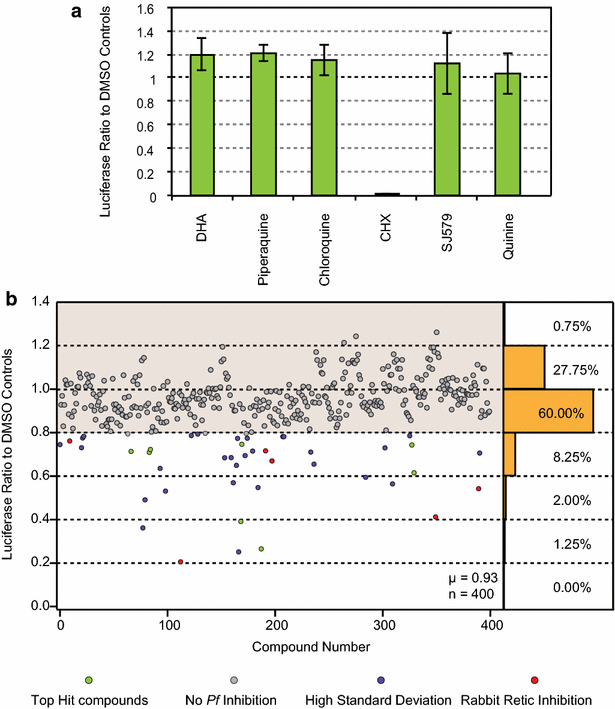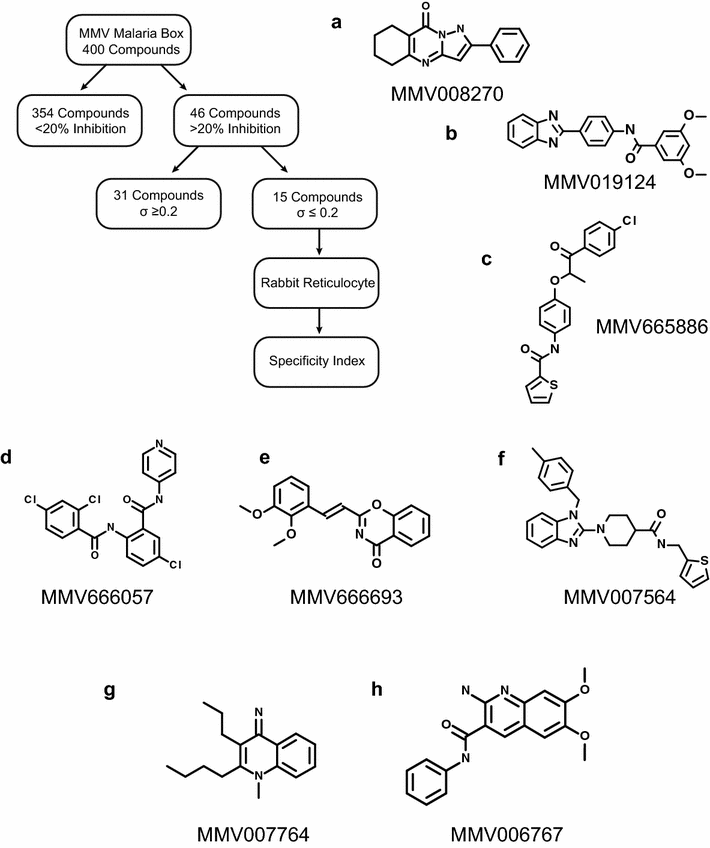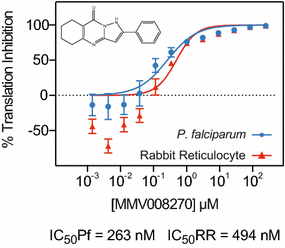Identification of Plasmodium falciparum specific translation inhibitors from the MMV Malaria Box using a high throughput in vitro translation screen
- PMID: 26987601
- PMCID: PMC4794828
- DOI: 10.1186/s12936-016-1231-8
Identification of Plasmodium falciparum specific translation inhibitors from the MMV Malaria Box using a high throughput in vitro translation screen
Abstract
Background: A major goal in the search for new anti-malarial compounds is to identify new mechanisms of action or new molecular targets. While cell-based, growth inhibition-based screening have enjoyed tremendous success, an alternative approach is to specifically assay a given pathway or essential cellular process.
Methods: Here, this work describes the development of a plate-based, in vitro luciferase assay to probe for inhibitors specific to protein synthesis in Plasmodium falciparum through the use of an in vitro translation system derived from the parasite.
Results: Using the Medicines for Malaria Venture's Malaria Box as a pilot, 400 bioactive compounds with minimal human cytotoxicity profiles were screened, identifying eight compounds that displayed greater potency against the P. falciparum translation machinery relative to a mammalian translation system. Dose-response curves were determined in both translation systems to further characterize the top hit compound (MMV008270).
Conclusions: This assay will be useful not only in future anti-malarial screening efforts but also in the investigation of P. falciparum protein synthesis and essential processes in P. falciparum biology.
Keywords: Anti-malarials; MMV; Malaria Box; Plasmodium falciparum; Ribosome; Screen; Translation.
Figures




References
-
- Jiménez-Díaz MB, Ebert D, Salinas Y, Pradhan A, Lehane AM, Myrand-Lapierre M-E, et al. (+)-SJ733, a clinical candidate for malaria that acts through ATP4 to induce rapid host-mediated clearance of Plasmodium. Proc Natl Acad Sci USA. 2014;111:E5455–E5462. doi: 10.1073/pnas.1414221111. - DOI - PMC - PubMed
-
- Guler JL, Freeman DL, Ahyong V, Patrapuvich R, White J, Gujjar R, et al. Asexual populations of the human malaria parasite, Plasmodium falciparum, use a two-step genomic strategy to acquire accurate, beneficial DNA amplifications. PLoS Pathog. 2013;9:e1003375. doi: 10.1371/journal.ppat.1003375. - DOI - PMC - PubMed
Publication types
MeSH terms
Substances
Grants and funding
LinkOut - more resources
Full Text Sources
Other Literature Sources

